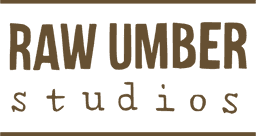Materials list - Composing the Portrait Painting with Tom Van de Wouwer (Aug 2024)
If you’re a beginner, then knowing what materials to buy can be daunting. If you have no supplies at all, or aren’t sure what to bring, then we recommend you buy the following. We’ve included links to Jackson’s Art, but most of these supplies are available from other outlets too.
Getting started in oil paints can be expensive, but much of this equipment should last you for years. If you are an intermediate painter, then treat the following list as a guideline – feel free to bring along different brands or additional materials.
The following materials are recommended by Tom.
If you have any questions, please pop us an email on [email protected]
Painting surface:
- 1 - 2 boards or canvases (no larger than 40 x 50cm)
A note from Tom: I work on aluminium composite panels that are primed with acrylic white gesso (Dibond panels or a similar product from a different brand). But any other surface you're comfortable working on is fine too (primed Masonite, oil/acrylic primed linen stretched or mounted on board, etc.)
When using acrylic gesso to prime: use gesso cut 0 - 25% with water, depending on the consistency. Lightly sand the board with sandpaper between coats. 1-2 coats will do . Or you can purchase pre-primed acrylic boards. It's the easiest thing to do. However you are free to bring to the support you’re used to working on.
Paint brushes:
Bring a variety of brushes that you're comfortable using. Here are some of our recommendations:
Bring a variety of brushes that you're comfortable using. Here are some of our recommendations:
- Various size brushes, i.e. filberts, flats, and fan brushes. (or whatever you're comfortable working with). I use a variety of soft (synthetic only) brushes myself adapted to the slickness of my support’s surface.
Paint: oil colours are recommended (no acrylic!).
The colours listed below are Tom's standard palette. However, these are an indication only and not a precise requirement for the workshop. Bring your standard palette if you have experience in oil painting and perhaps add a few high chroma colours (orange-red-purple) from the list below. If you have any questions about this, do ask!
- Titanium white (Williamsburg - PW 6)
- Cadmium Yellow Lt (Old Holland PY 35)
- Cadmium Yellow Deep (Rembrandt PY 35/PO 20)
- Cad Red Lt ( Rembrandt PR 108/ PO 20)
- Yellow Ochre Pale (W&N PY 42)
- Raw Sienna (Rembrant PY42/ PR 101)
- Transparent Oxide Red (Rembrandt PR 101)
- Permanent Madder Deep (Rembrandt PR 264)
- Quinacridone Magenta (Sennelier PR 122)
- Quinacridone Rose (Rembrandt PV 19)
- French Ultramarine (W&N PB 29)
- Cobalt Turquoise Light (Sennelier PG 50)
- Viridian Green (Rembrandt PG 18)
- Sap Green (Rembrandt PG 7/ PY 110)
- PrussianBlue (Williamsburg PB 27)
- (optional: Naples Yellow Lt, Brilliant Yellow, Brilliant Pink, Naples Red, English Red, Transparent Red Medium, Mars Violet, Cad Green Lt, Raw Umber, Manganese Blue, Violet Grey, Phthalo Blue, Brown Pink...)
Mediums/other:
- Stand Oil/Linseed Oil/low-odour solvent (eg Sansodor). Note that turpentine is not permitted in the studio.
- Some kitchen towels to wipe your paint brushes with.
- 2 x Dipper
- 2 x jam jars for keeping brushes in
- 1 x small plastic container with lid, to store paints in overnight
- Mahl or support stick
- Kitchen roll
Notes
+ These paints contain heavy metals and are potentially toxic if inhaled or ingested. In practice, good studio habits (such as not licking brush tips, and taking precautions when sanding used canvases) reduce the risks. If, however, you have a particular reason to be concerned (for example, if you may be pregnant) then e-mail us and we can recommend alternatives.
Make sure you buy the correct handed palette – a palette to hold in your left hand if you’re right-handed, and vice versa. If your budget permits it, we recommend you buy a New Wave palette – these are lightweight, balanced and come pre-varnished. If you buy an unvarnished palette then you’ll need to rub linseed oil on daily for a few days before you can use it.
For beginners, filbert and flat brushes are most useful. Over time, you’ll get a feel for which brushes you tend to use and which you don’t.
